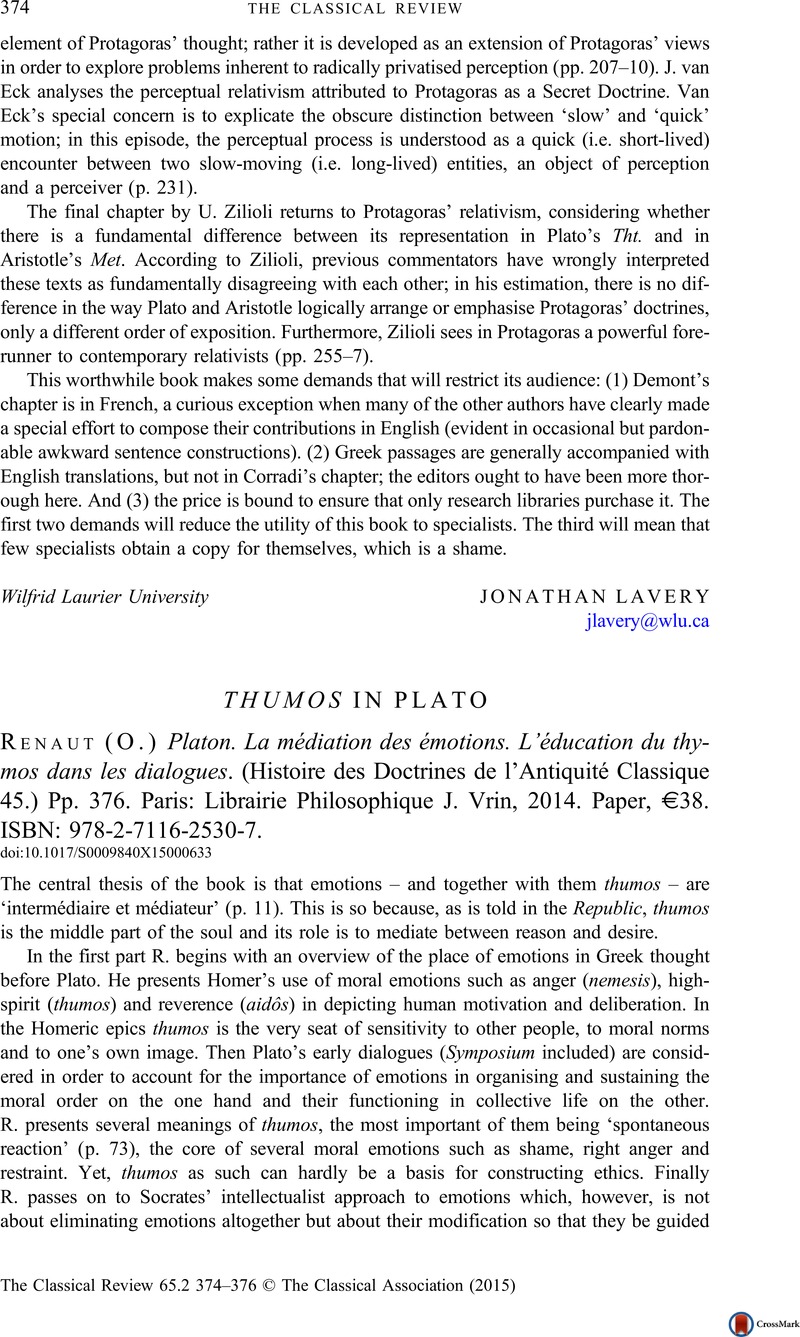No CrossRef data available.
Published online by Cambridge University Press: 22 June 2015

1 For a more complex identification see R. Zaborowski, ‘Some Remarks on Plato on Emotions’, in Emotions in Pre- & Early Modern Mediterranean. A special issue of Mirabilia: Electronic Journal of Antiquity & Middle Ages 15, 2/2012, 141–70Google Scholar.
2 It includes several subclasses such as passions, emotions, feelings, affections and so on. It is characteristic that what R. here calls émotion, he elsewhere calls sentiment or passion or affect. Similarly, aidôs is both émotion (and émotion morale) and sentiment (p. 46); anger is both sentiment (p. 61) and émotion (p. 63). On p. 76 R. sees more widely and speaks about ‘affections, des émotions et des sentiments dans l'action’.
3 For R. thumos is once emotion, once moral emotions and, on another occasion, certain moral emotions.